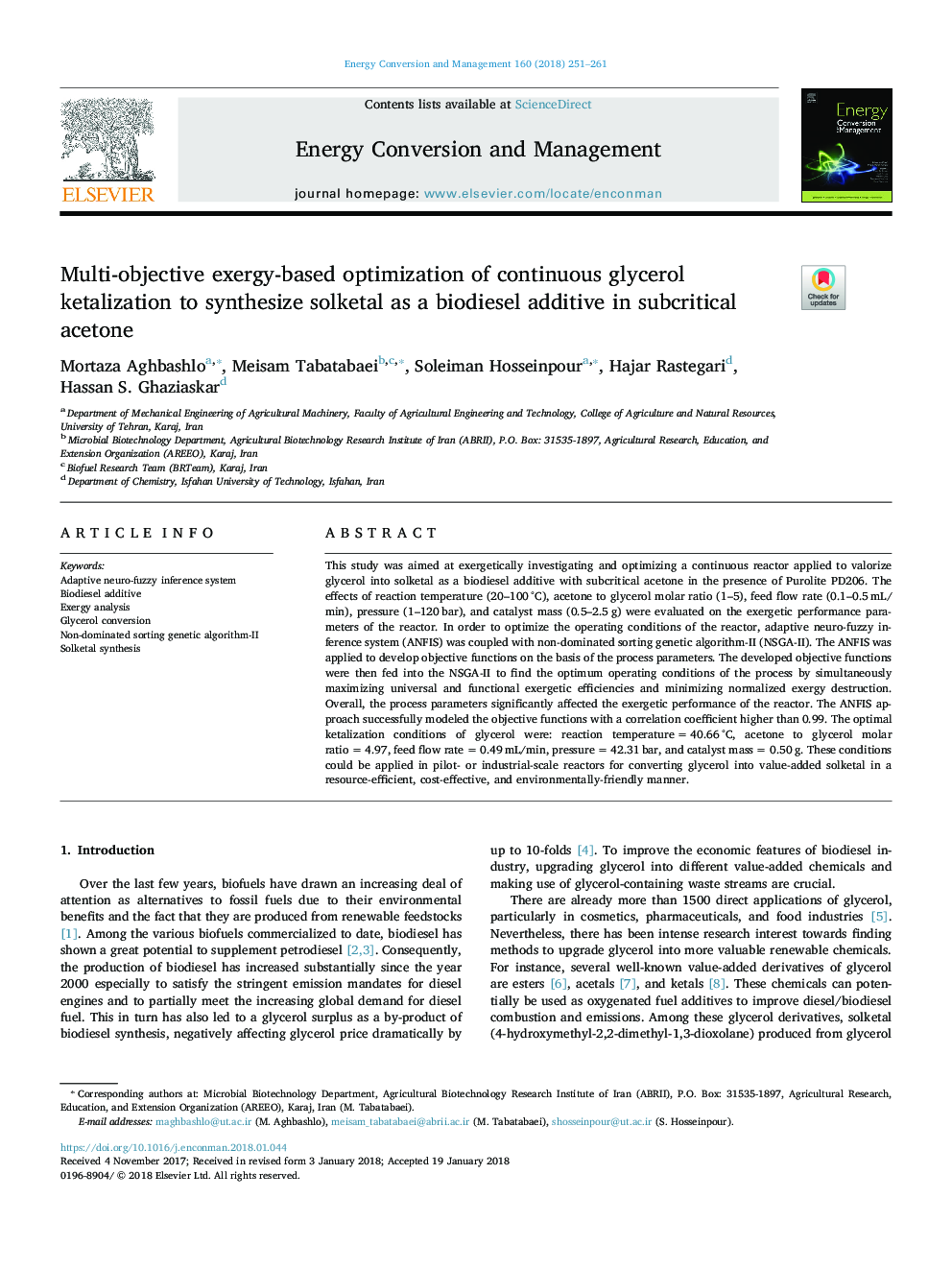| Article ID | Journal | Published Year | Pages | File Type |
|---|---|---|---|---|
| 7159002 | Energy Conversion and Management | 2018 | 11 Pages |
Abstract
This study was aimed at exergetically investigating and optimizing a continuous reactor applied to valorize glycerol into solketal as a biodiesel additive with subcritical acetone in the presence of Purolite PD206. The effects of reaction temperature (20-100â¯Â°C), acetone to glycerol molar ratio (1-5), feed flow rate (0.1-0.5â¯mL/min), pressure (1-120â¯bar), and catalyst mass (0.5-2.5â¯g) were evaluated on the exergetic performance parameters of the reactor. In order to optimize the operating conditions of the reactor, adaptive neuro-fuzzy inference system (ANFIS) was coupled with non-dominated sorting genetic algorithm-II (NSGA-II). The ANFIS was applied to develop objective functions on the basis of the process parameters. The developed objective functions were then fed into the NSGA-II to find the optimum operating conditions of the process by simultaneously maximizing universal and functional exergetic efficiencies and minimizing normalized exergy destruction. Overall, the process parameters significantly affected the exergetic performance of the reactor. The ANFIS approach successfully modeled the objective functions with a correlation coefficient higher than 0.99. The optimal ketalization conditions of glycerol were: reaction temperatureâ¯=â¯40.66â¯Â°C, acetone to glycerol molar ratioâ¯=â¯4.97, feed flow rateâ¯=â¯0.49â¯mL/min, pressureâ¯=â¯42.31â¯bar, and catalyst massâ¯=â¯0.50â¯g. These conditions could be applied in pilot- or industrial-scale reactors for converting glycerol into value-added solketal in a resource-efficient, cost-effective, and environmentally-friendly manner.
Keywords
Related Topics
Physical Sciences and Engineering
Energy
Energy (General)
Authors
Mortaza Aghbashlo, Meisam Tabatabaei, Soleiman Hosseinpour, Hajar Rastegari, Hassan S. Ghaziaskar,
